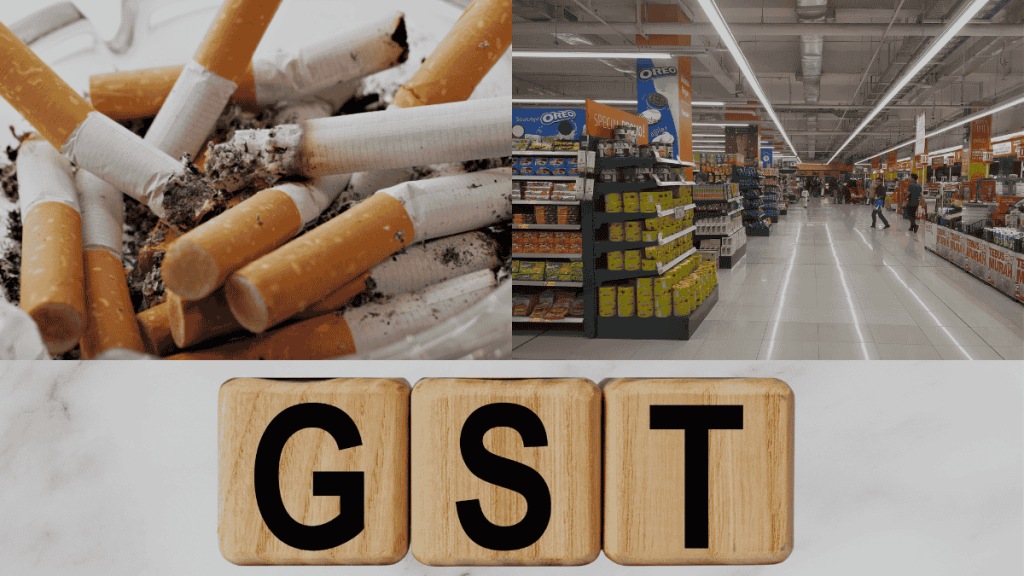The GST 2.0 will not only ease the tax burden on households, empower MSMEs, and accelerate formalisation, but also tackle illicit markets. This is as per a latest report unveiled by FICCI on GST 2.0. FICCi’s Committee Against Smuggling and Counterfeiting Activities Destroying the Economy (CASCADE) said in a report that high tax rates under GST 1.0 created opportunities for illicit trade.
GST 2.0 to curb Illicit FMCG and packaged food markets with lower rates
Between FY18-FY23, illicit FMCG markets grew by over 70%, packaged foods by nearly 100%, and illicit tobacco trade crossed Rs 41,000 crore. By moderating the standard slab to 18% and shifting essentials into the 5% category, GST 2.0 is expected to reduce smuggling and counterfeiting, protect consumers, and strengthen the formal economy.
However, the report warns that the new 40% slab for demerit goods, particularly tobacco, could encourage illicit markets. Between 2018–19 and 2022–23, the tax component of illicit tobacco rose from Rs 3,812 crore to Rs 16,168 crore, with its share in the illicit market rising from 15% to 54%.
5% slab expands: Categories rise to 149 from 54 under GST 2.0
The report shows that GST 2.0 almost triples the number of items taxed at 5%, increasing from 54 categories under GST 1.0 to 149 categories.
For rural households, the share of exempt and merit goods rises from 56.3% to 73.5%, while for urban households it goes from 50.5% to 66.2%. Effective GST incidence falls from 6.03% to 4.27% for rural families and from 6.38% to 4.38% for urban households, giving consumers more disposable income.
For businesses, especially MSMEs, GST 2.0 rationalizes rates and addresses distortions caused by the inverted duty structure. Key sectors like tractors, farm machinery, fertilizers, textiles, handicrafts, auto components, and construction inputs now have lower, more rational rates.
Every rupee spent on legitimate goods strengthens the formal economy and builds confidence among businesses, while every rupee lost to illicit trade weakens consumer safety and public revenues, it said, according to PTI.
Short-term revenue dip, long-term gains
The study estimates that GST 2.0 may lead to a short-term revenue loss for the government. However, this is expected to be offset by higher consumption, better compliance, and wider tax coverage in the long run. It also pointed out that indirect tax collections have already doubled under GST 1.0, rising from Rs 11.78 lakh crore in 2018-19 to Rs 22.09 lakh crore in 2024-25.
At the same time, the GST taxpayer base has expanded significantly. From 66.5 lakh taxpayers in 2017, the number has grown to 1.51 crore in 2025, showing that more businesses are steadily entering the formal economy.
